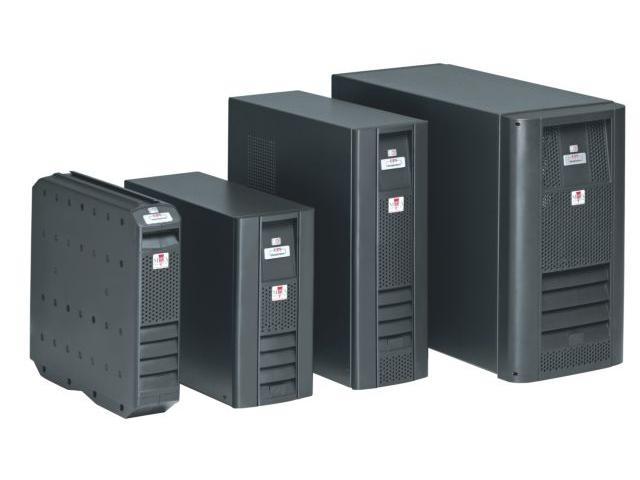Ensuring Power Continuity for Business Operations with Uninterruptible Power Supply Systems

Introduction to UPS Systems
An uninterruptible power supply, commonly referred to as a UPS, is a power protection system that provides emergency backup power to connected electrical equipment when the main power source or utility power fails. UPS systems differ from standard backup generators in that they can instantly provide temporary power support measured in minutes, as opposed to the few seconds it takes a generator to start up.
How UPS Systems Work
Uninterruptible Power Supply units work by using rechargeable batteries, usually lead-acid or lithium-ion, that are kept continuously charged by the utility or mains power entering the UPS. When the UPS detects a power outage or brownout condition, it seamlessly switches to battery power within milliseconds to keep connected equipment running without disruption.
The batteries power inverters inside the UPS that convert the DC battery power to cleaner AC power identical to utility power. Some UPS models also include output receptacles that allow non-critical equipment like desktop computers to switch to battery backup automatically during an outage for temporary operation.
Key Components of a UPS System
All UPS units have the basic components of an AC input, batteries, inverters, and AC output. Beyond this, features and size can vary greatly depending on the application and power needs:
- Batteries: Sealed lead-acid batteries for smaller UPS units, open/wet cell types for larger systems, or sealed lithium-ion for newest models. Capacity and recharge time depends on loads supported.
- Inverter: Pure or simulated sine wave for general loads, or online/double-conversion for sensitive equipment. Larger kW inverters for entire rooms/racks.
- Interface/Display: Basic UPS have LEDs only, others add LCD screens and network/software features for remote monitoring.
- Bypass/Maintenance Bypass: Allow continued power if UPS fails, essential for critical applications.
- Output Receptacles: Basic units have only one or two, others have surge protected power distribution for multiple devices.
Selecting the Proper UPS Size
When sizing a UPS, the most important specifications are its continuous output power rating in volts-amps (VA) and watts, and its maximum load capacity. IT and facilities managers must calculate the total power needs of all equipment to be backed up, adding a buffer depending on future expansion plans.
Other factors include expected runtime on battery during an outage based on the workload, ambient temperature the UPS will operate in, and whether battery replacement service is required. Correct sizing ensures equipment uptime during storms or other power issues that cause utility disruptions.
Applications for UPS Systems
No matter the industry, there are some common critical applications where UPS systems are considered essential:
- Data Centers: Prevent downtime for servers, storage, networking gear supporting business systems.
- Medical Facilities: Life-saving equipment like ventilators, surgery tools require seamless power.
- Manufacturing Plants: Process control systems, automated equipment, quality testing rely on power continuity.
- Corporate Networks: File servers, phone systems, security need backup during outages affecting whole buildings.
- Retail Point-of-Sale: Cash registers and credit card processing require steady power for transactions.
- Building Infrastructure: UPS for HVAC, elevators, lighting in event of electrical grid failure.
Maintenance and Lifecycle of a UPS
With heavy dependency on lead-acid batteries, proper preventative maintenance is important to maximize a UPS’s service life. Scheduled battery replacements every 3-5 years based on usage and temperature prevent unexpected failures. UPS units also need regular load and self-testing to verify operational status.
Newer UPS technologies are addressing total cost of ownership with longer-life lithium-ion batteries, more efficient double-conversion designs, and remote monitoring tools that lower maintenance overhead. As power reliability risks to business increase, UPS investments remain essential infrastructure to mitigate revenue losses from downtime.
Conclusion
In conclusion, uninterruptible power supply systems are a crucial element of power backup strategies for organizations handling sensitive data, equipment, or operations. By providing instantaneous backup power bridging even microsecond gaps, UPS units ensure business systems stay operational during utility outages outside a company's control. With careful sizing, installation, and maintenance best practices, UPS investments deliver long-term protection of revenue streams vulnerable to downtime.
Get more insights on Power Supply Systems
- Art
- Causes
- Crafts
- Dance
- Drinks
- Film
- Fitness
- Food
- Spiele
- Gardening
- Health
- Startseite
- Literature
- Music
- Networking
- Andere
- Party
- Religion
- Shopping
- Sports
- Theater
- Wellness
- IT, Cloud, Software and Technology


